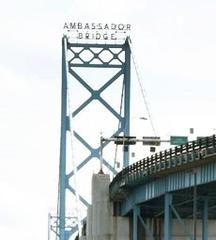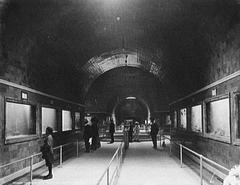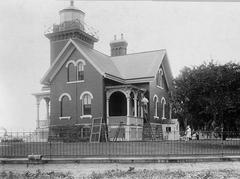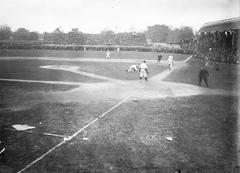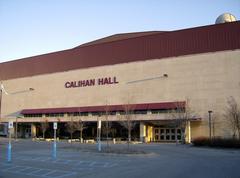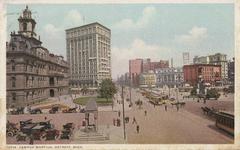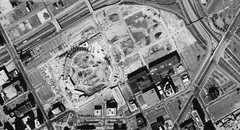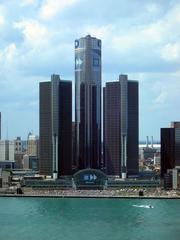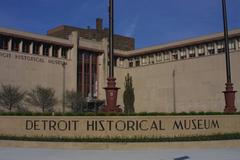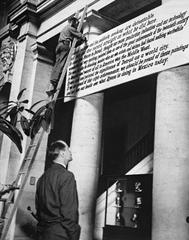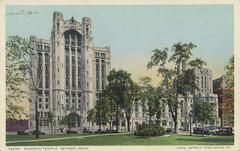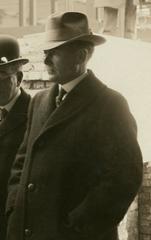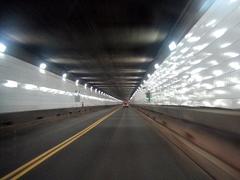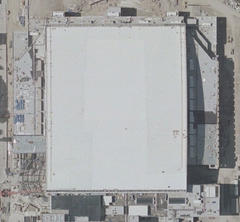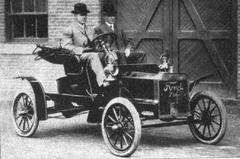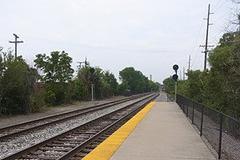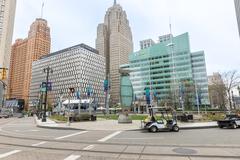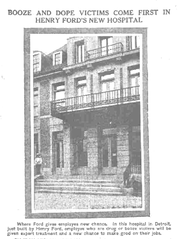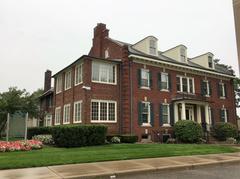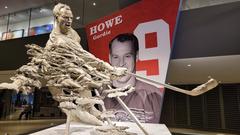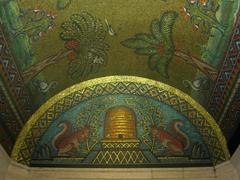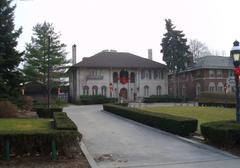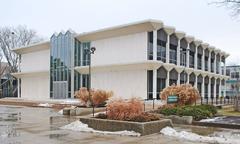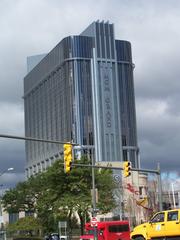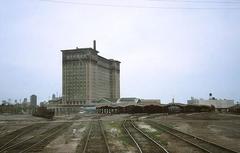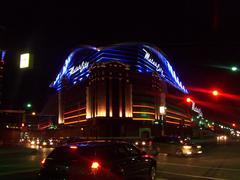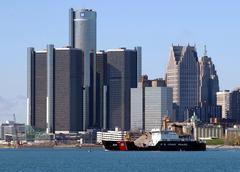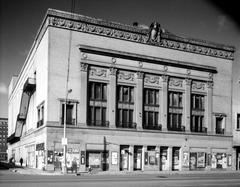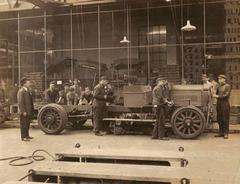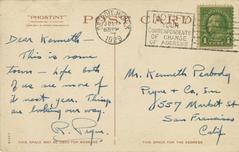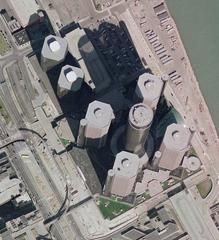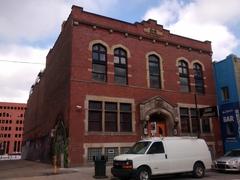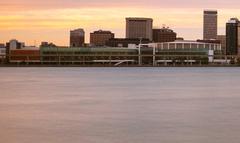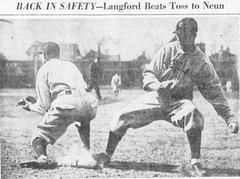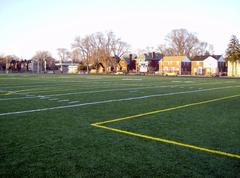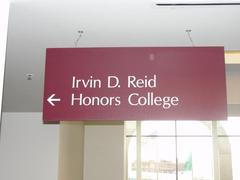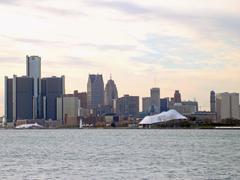
First Unitarian Church of Detroit: Visiting Hours, Tickets, and Historical Significance
Date: 04/07/2025
Introduction
The First Unitarian Church of Detroit stands as a beacon of religious progressivism, architectural artistry, and social activism in the heart of Detroit, Michigan. With roots reaching back to the early 19th century, the church has evolved alongside the city—first as pioneering Unitarian and Universalist congregations, then as a celebrated Romanesque Revival structure on Woodward Avenue, and today as the vibrant First Unitarian Universalist Church of Detroit on Cass Avenue. This guide offers essential visiting information, explores the church’s fascinating history and architecture, and highlights opportunities for visitors to experience its enduring legacy within Detroit’s cultural landscape (1st UU Detroit History Tour, 2024; Historic Detroit; Wikipedia).
Table of Contents
- Early History and Growth in Detroit
- Architectural Significance of the Woodward Avenue Church
- Social Impact and Community Role
- Merger, Relocation, and the Cass Avenue Era
- Preservation, Loss, and the Church’s Living Legacy
- Visiting the First Unitarian Universalist Church of Detroit
- Frequently Asked Questions (FAQ)
- Conclusion and Call to Action
- References
Early History and Growth in Detroit
The Universalist movement established a foothold in Detroit in 1831, followed soon after by the first Unitarian sermon in Michigan in 1833, delivered by Rev. John Pierpont. The congregations initially worshiped in rented halls such as Merrill Hall and Odd Fellows Hall, gradually building a following among Detroit’s growing population. The First Congregational Unitarian Society was formally incorporated in 1850, laying the groundwork for what would become one of Detroit’s most influential religious communities (1st UU Detroit History Tour, p. 6-9; Wikipedia).
Architectural Significance of the Woodward Avenue Church
By 1890, the Unitarians’ growth led to the construction of a new church at Woodward Avenue and Edmund Place, designed by Donaldson & Meier. This Romanesque Revival structure featured red sandstone masonry, a slate roof with open timber trusses, and a distinctive, unadorned silhouette. The church’s west façade was adorned with stunning stained-glass windows by John La Farge, each commemorating prominent Detroiters. These windows, considered masterpieces of American glass art, are now preserved at the Detroit Institute of Arts (Historic Detroit; Wikipedia).
Social Impact and Community Role
Located in Detroit’s “Piety Hill” district, the church became a hub for social justice, education, and civic engagement. The congregation championed progressive causes including abolition, women’s suffrage, civil rights, and LGBTQ+ equality, embodying the liberal values at the core of Unitarian and Universalist traditions. The church’s inclusive ethos and activism continue to shape its mission today (Wikipedia; UUA History).
Merger, Relocation, and the Cass Avenue Era
Major urban infrastructure projects in the 1930s, notably the widening of Woodward Avenue, led to significant changes at the original site. In 1934, the Unitarian and Universalist congregations merged, relocating to the First Universalist Church of Our Father’s 1916 Neo-Gothic building at 4605 Cass Avenue. This structure, also designed by Donaldson & Meier and attached to the historic Perry McAdow House, became the new home of the unified congregation and remains active today (Wikipedia; 1st UU Detroit).
After the move, the Woodward Avenue building passed through several denominations before suffering neglect and multiple fires. Despite its 1982 listing on the National Register of Historic Places, a devastating fire in 2014 led to its demolition (Detroit Urbex).
Preservation, Loss, and the Church’s Living Legacy
While the original Woodward Avenue church is gone, its artistic and spiritual legacy endures. The famed La Farge stained-glass windows can be viewed at the Detroit Institute of Arts, and archival photos and documents preserve the church’s story. Today, the First Unitarian Universalist Church of Detroit continues its mission as a center for worship, education, and activism. The complex is also home to the Cass Corridor Commons, a nonprofit green space and community hub managed by the East Michigan Environmental Action Council (Wikipedia; 1st UU Detroit).
Visiting the First Unitarian Universalist Church of Detroit
Hours, Admission, and Accessibility
- Location: 4605 Cass Avenue, Detroit, MI 48201
- Sunday Worship Services: 10:30 AM (onsite and online)
- Admission: Free for services and most events; donations are welcome
- Accessibility: Wheelchair accessible, with ramps and accessible restrooms. Contact the church office for special arrangements.
Check the official church calendar for special events, lectures, workshops, and updates to visiting hours.
Guided Tours and Educational Programming
- Guided Tours: Available by appointment; provide insight into the church’s architecture, art, and social history. Often offered during events like Detroit’s annual Open Doors.
- Educational Events: The church hosts lectures, art exhibitions, concerts, and social justice workshops open to the public. Details are available on the church website and social media.
Nearby Attractions and Visitor Tips
- Detroit Institute of Arts: View the original La Farge stained-glass windows.
- Wayne State University: Explore the vibrant Midtown campus and cultural scene.
- Detroit Historical Museum: Learn more about the city’s past.
- Transportation: Easily accessible by public transit (bus and QLINE); limited on-site parking available.
- Dining: Midtown Detroit offers diverse restaurants and cafés within walking distance.
Photographic and Media Opportunities
- Architecture: The Neo-Gothic sanctuary and Perry McAdow House provide striking photo subjects.
- Community Events: Document the vibrancy of Detroit’s progressive community.
- Media Resources: High-quality images are available on the church’s official website, with alt tags optimized for searchability (e.g., “First Unitarian Universalist Church of Detroit visiting hours,” “Detroit historical sites”).
Frequently Asked Questions (FAQ)
Q: What are the regular visiting hours?
A: Sunday services begin at 10:30 AM. Additional visiting hours depend on scheduled events; consult the church calendar.
Q: Is admission free?
A: Yes, services and most events are free. Donations are appreciated.
Q: Is the church accessible for people with disabilities?
A: Yes, the building is wheelchair accessible and accommodations can be made upon request.
Q: Can I tour the original Woodward Avenue church?
A: The original building was demolished in 2014. However, artifacts and historical information are available at the current church and the Detroit Institute of Arts.
Q: Are guided tours available?
A: Yes, by appointment or during special events. Contact the church office for details.
Q: Where can I see the historic stained-glass windows?
A: Three are displayed at the Detroit Institute of Arts.
Conclusion and Call to Action
A visit to the First Unitarian Universalist Church of Detroit offers a unique window into Detroit’s architectural, spiritual, and activist heritage. Whether you attend a Sunday service, tour the sanctuary, or explore nearby cultural institutions, you’ll find a welcoming community committed to justice, inclusivity, and lifelong learning.
To plan your visit, check the official website for up-to-date information on hours, tours, and events. Enhance your experience with the Audiala app for interactive guides and virtual tours of Detroit’s historic sites.
Embrace the opportunity to connect with Detroit’s past and present—plan your visit to the First Unitarian Universalist Church of Detroit today!
References
- 1st UU Detroit History Tour, 2024, First Unitarian Universalist Church of Detroit
- Historic Detroit
- Wikipedia: First Unitarian Church of Detroit
- Wikipedia: First Unitarian Universalist Church of Detroit
- Detroit Urbex
- First Unitarian Universalist Church of Detroit Official Website
- Unitarian Universalist Association History

